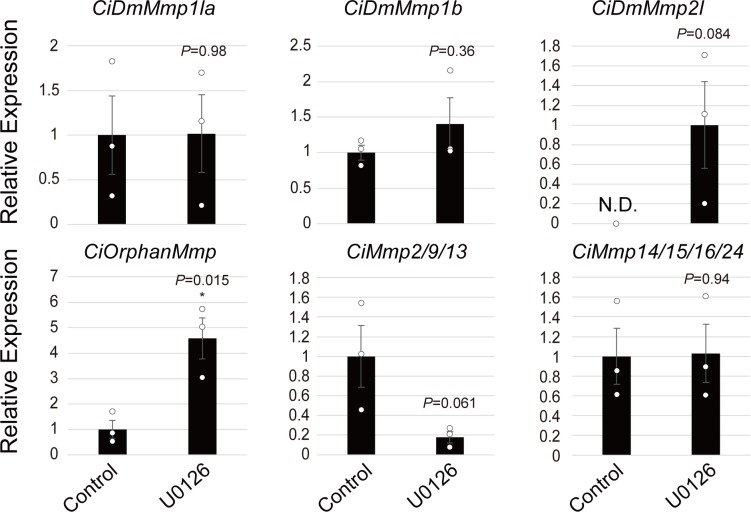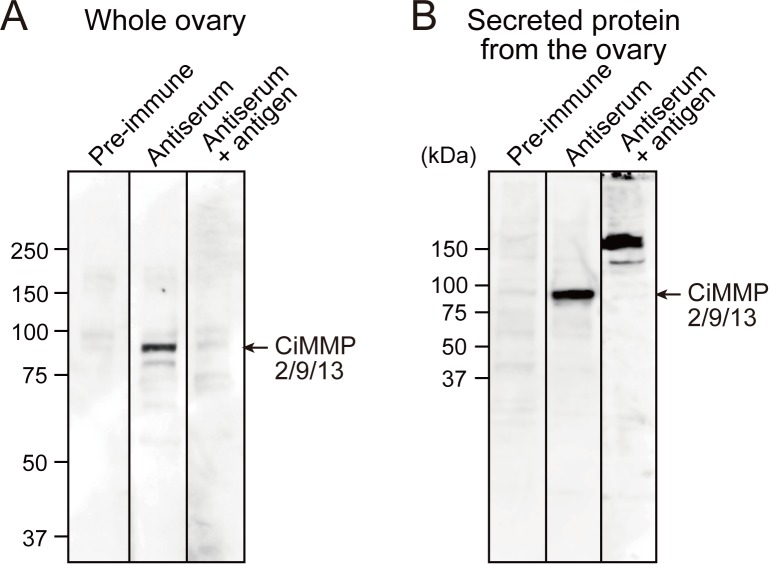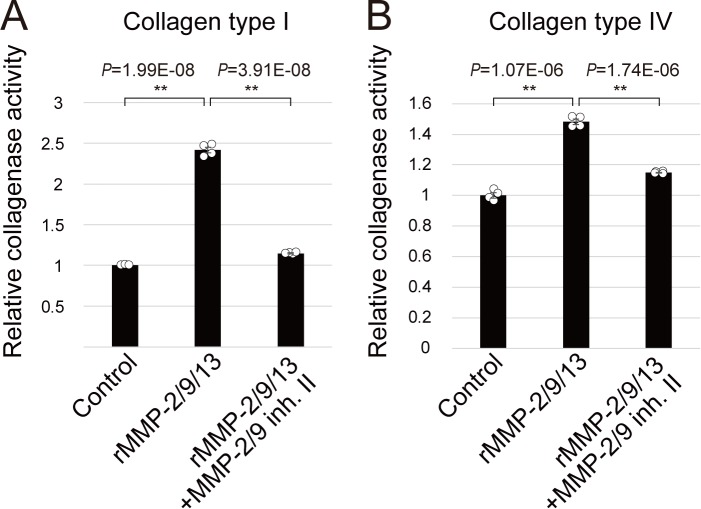Figure 5. CiVP activates CiMMP2/9/13 via MEK/ERK signaling during ovulation.
(A, B) qRT-PCR indicated that MEK inhibition with 10 μM U0126 in early stage III follicles (A) and 5 μM CiVP stimulation in late stage II follicles (B) for 24 hr results in decrease and increase of CiMmp2/9/13 expression relative to CiUbac1, respectively. Data from three (A, n = 3) and six (B, n = 6) independent experiments were analyzed by Student’s t test and are shown as mean ± SEM with data points (t-value: 3.08; *, p=0.037 in (A) and t-value: −3.24; **, p=8.92E-03 in (B)). (C) Immunohistochemistry using anti-CiMMP2/9/13 antiserum and the ABC detection system confirmed that CiMMP2/9/13 is localized in oocytes (O) and outer follicular cells (OFc), but not in test cells (Tc). Antiserum pre-absorbed with antigen or pre-immune serum (inset) were used as negative controls. Enlarged images of red-boxed areas in the upper panels are shown below. (D) Treatment with 20 μM MMP-2/9 inhibitor II significantly inhibited ovulation of late stage III follicles (t-value: 8.14; **, p=1.24E-03). (E) Significant CiVP-induced ovulation of late stage II follicles (t-value: −6.38; **, p=2.13E-04) was disrupted by MMP-2/9 inhibitor II (t-value: 10.25; **, p=7.07E-06). Data from three (D, n = 3) and five (E, n = 5) independent experiments were analyzed by Student’s t test and are shown as mean ± SEM with data points.




